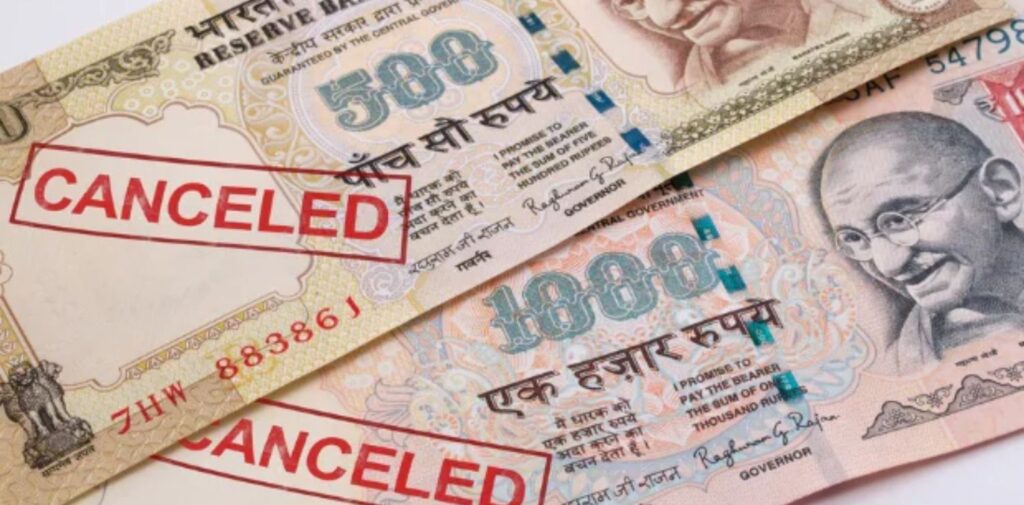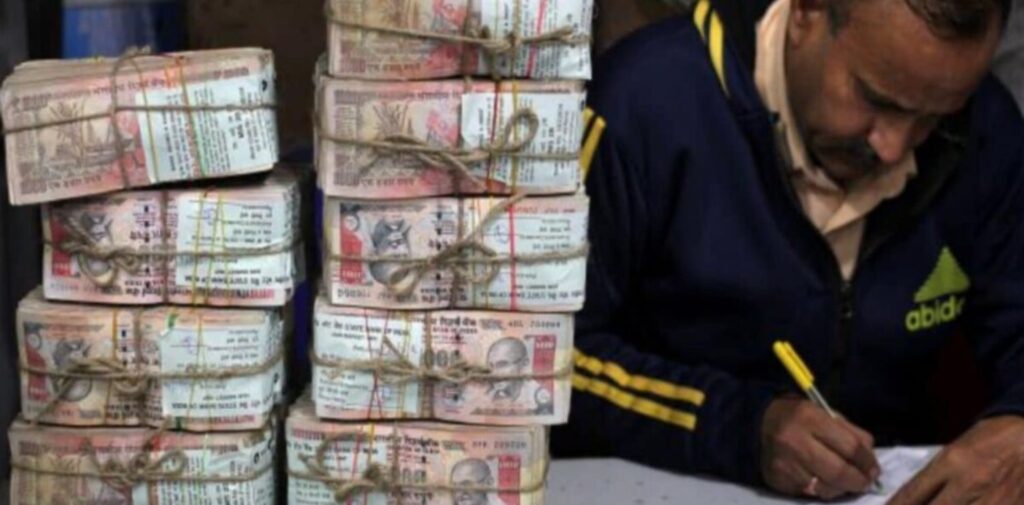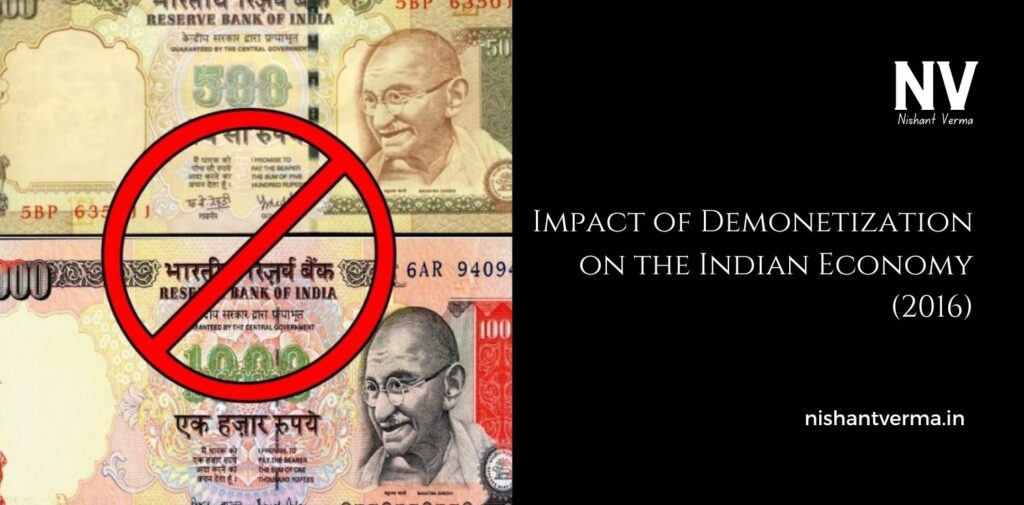In November 2016, India went through a significant change that caught the attention of the entire country. The Prime Minister, Narendra Modi, announced that the 500-rupee and 1000-rupee notes, which were the most commonly used in daily transactions, would no longer be valid. This decision is known as demonetization. It was a big step in India’s financial history, and its effects were felt throughout the country.
In this article, we’ll try to understand what demonetization was, why it happened, and how it affected the people and the economy of India. Let’s break it down into easy-to-understand sections.
What is Demonetization?
Demonetization is when a country decides to stop using a certain type of currency note. In India’s case, the government decided that the 500 and 1000-rupee notes would no longer be used as money. People could not use these notes to buy things, and they had to exchange them for new notes at the bank or deposit them into their accounts.
This move was a big surprise for many people, and it caused confusion and stress. But why did the government decide to do this?

Why Did the Government Demonetize the Notes?
There were a few main reasons why the government decided to demonetize the currency in 2016. Let’s look at them:
- Fighting Black Money: The government wanted to reduce the amount of black money (money earned illegally and kept hidden). By demonetizing the large notes, the government hoped that people who had illegal money would have a hard time using it because they would need to exchange it for new notes, and it would be easier to track them.
- Stopping Fake Currency: Fake money or counterfeit notes were a big problem in India. These fake notes were often used for illegal activities. By removing the 500 and 1000-rupee notes from circulation, the government aimed to reduce fake currency.
- Encouraging a Digital Economy: The government wanted people to use digital payments more often, such as through debit cards, credit cards, and mobile wallets. This would make the economy more transparent and reduce corruption.
- Increasing Tax Collection: The government wanted more people to pay taxes. With the demonetization move, it would be easier to track money transactions and make sure everyone paid their fair share of taxes.
How Did Demonetization Affect the Common People?
The announcement of demonetization caused a lot of confusion and panic among the people. For most of the population, the 500 and 1000-rupee notes were the most commonly used for everyday transactions. People used these notes to buy groceries, pay for transport, and even pay bills.
After the demonetization announcement, people had to stand in long lines at banks to exchange their old notes for new ones. Many people also faced problems because there were not enough new notes available at the banks.
The sudden removal of these notes led to a shortage of cash in the economy. This was especially hard for people in rural areas, where digital payments were not as common, and many did not have access to banks.
For small businesses and people who depended on cash for their daily work, this created a lot of difficulties. Some people could not go to work, while others could not pay their workers, causing a temporary halt in economic activities.

The Economic Effects of Demonetization
The demonetization decision had both positive and negative effects on the Indian economy. Let’s look at some of them.
Short-Term Negative Effects
- Slowdown in Business: Many businesses were affected in the short term. Small businesses, street vendors, and shops that only accepted cash saw a drop in sales. People were worried about not having enough cash to spend, so they stopped buying many things. This slowdown in consumer spending affected many industries, especially those that depended on cash transactions.
- Job Losses: Many people lost their jobs because of demonetization. For example, workers in construction, farming, and small businesses were unable to find enough work during this period. This led to a loss of income for many families, especially in rural areas.
- Banking Problems: The demand for new currency notes led to long queues at banks. In many places, people had to wait for hours just to exchange their money. This caused frustration and confusion.
Long-Term Positive Effects
- More Digital Payments: One of the biggest positives of demonetization was that it pushed people to use digital payment methods more than before. People began using smartphones to make payments, pay bills online, and even buy things from e-commerce websites. This helped bring India closer to a digital economy.
- Increased Tax Compliance: As a result of demonetization, more money moved through the banking system, making it easier for the government to track and tax transactions. More people who had previously avoided paying taxes now became part of the formal economy. This helped the government collect more taxes.
- Reduction in Fake Currency: The demonetization drive was successful in reducing the circulation of fake currency in the country. The government introduced new security features in the new notes, making it more difficult to counterfeit them.
- Increased Formal Economy: With more transactions happening through banks, people became more aware of the importance of being part of the formal economy. This led to more people opening bank accounts and using financial services, such as loans, savings accounts, and insurance.
Challenges Faced During Demonetization
Although demonetization brought some long-term benefits, it wasn’t without its challenges. Here are some of the main difficulties faced by people and businesses:
- Cash Shortage: There was a cash shortage for several months after the announcement. Many people were unable to access their money, and businesses struggled to operate without enough cash.
- Difficulty for the Poor: People in rural areas and those who depended on cash for daily work faced the most problems. The shift to digital payments was difficult for them, as they did not have access to smartphones or bank accounts.
- Impact on Farmers: Farming is largely dependent on cash in many parts of India. Farmers faced difficulties in buying seeds, fertilizers, and equipment because of the cash shortage. This affected agricultural production.

The Verdict: Was Demonetization a Success?
The impact of demonetization on India’s economy has been a subject of debate. While it led to some long-term improvements, it also caused significant short-term hardship for many people.
In the long run, demonetization helped India move towards a more digital economy, increased tax compliance and reduced the circulation of fake currency. However, the immediate impact was not easy for many, and the transition was difficult for people who were used to cash-based transactions.
Demonetization was a bold decision with both good and bad consequences. The government’s goal was to create a cleaner and more transparent economy, and while the results are mixed, it certainly made people think differently about how money works in India.
Conclusion
Demonetization in 2016 was one of the most significant and controversial events in India’s recent history. While it had its share of difficulties, it also brought about positive changes in the way people used money and paid for things. The Indian economy is still evolving, and the lessons from demonetization continue to shape how we think about money, technology, and the economy.
For now, it’s clear that demonetization changed the way India works financially, and whether it was good or bad depends on how you look at the long-term impact. As the country continues to grow, we can only hope that the lessons learned will help in building a stronger, more inclusive economy.




